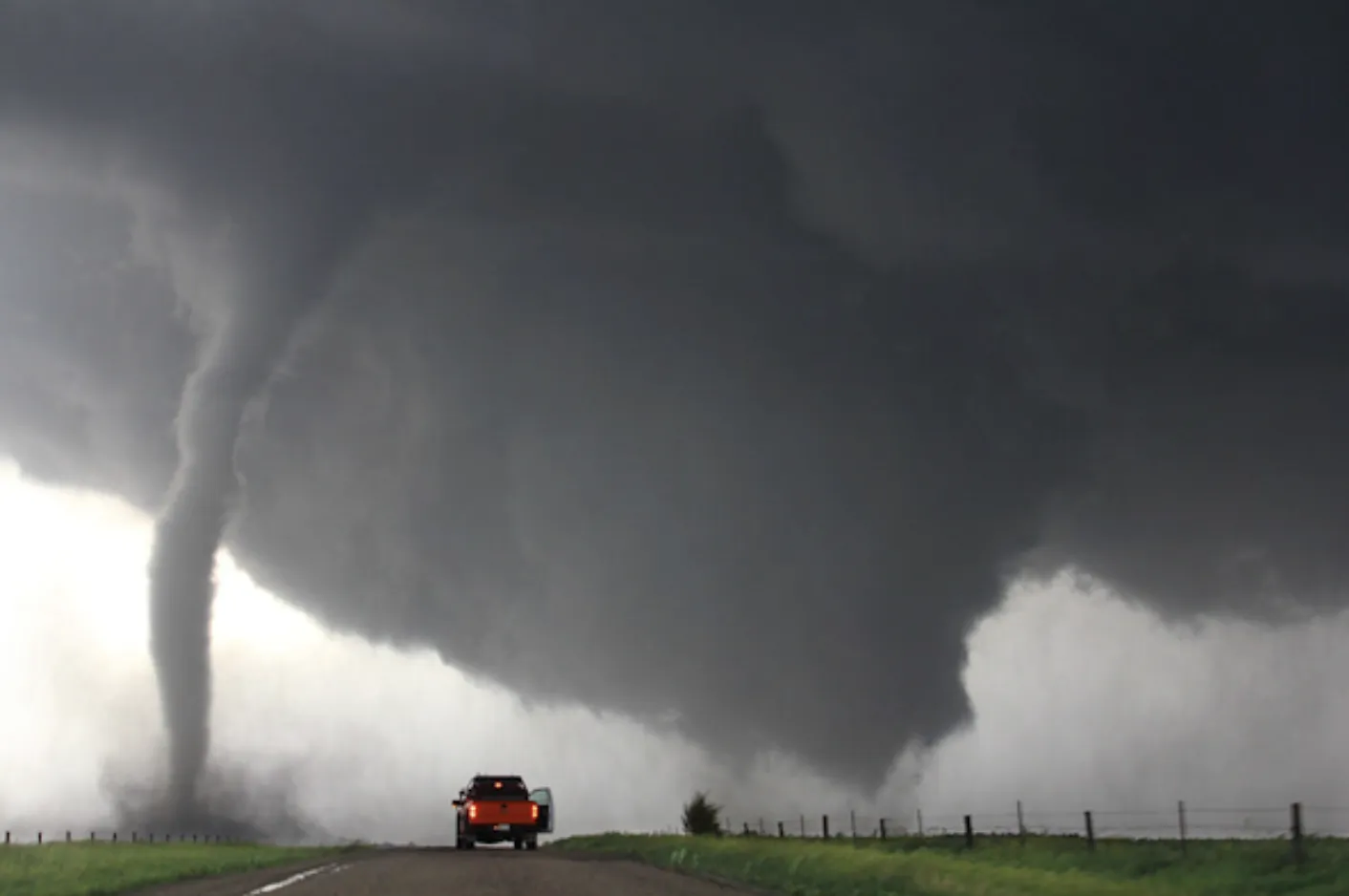June 18, 2024
Reporting on tornado protocols and resources can help your community be safer should a twister touch down

Tornadoes in Pender, Nebraska, pop. 1,100, on June 16, 2014. (Photo by Brent Koops/NOAA, Flickr CC via SEJ)
More than 100 tornadoes touched down across the Great Plains and Midwest in April, leaving swaths of wreckage and some fatalities in their wake.
With continued severe weather still possible, journalists can help keep their communities informed on tornado protocols and what to do if a touchdown is imminent. "With preparedness, many fatalities and injuries can be prevented or minimized," reports Joseph A. Davis for the Society of Environmental Journalists. "Public awareness of how to improve safety can be made better with media coverage." The best time for journalists to ask themselves what they can do to ensure their community is ready should disaster strike is before an emergency. Below are some edited story tips from Davis:
- What is the historical record of tornadoes in your state? What are the most recent trends? Ask researchers at local universities.
- Does your community have Doppler radar coverage? Researchers have found "radar gaps," which leave some communities less protected.
- Ask local meteorologists how they get their tornado information.
- How (and how well) does the emergency notification system work in your area? Who runs it? Who cooperates? What technology platform does it use? Is it effective at warning people? Is there a big siren? How does it work in remote areas?
- Is your community hooked into the federal Emergency Alert System? Does it have "reverse 911"? Do people know how to get alerts on their phones?
- Do people in your community have tornado-safe shelters such as storm cellars? Do people typically have basements?
- Does your community have mobile home parks, nursing homes, schools or daycare facilities? Talk to the managers and residents of these especially vulnerable facilities about whether/how they are prepared to handle tornado emergencies.
Weather reporting tools:
- NOAA National Severe Storms Laboratory: Centered in Norman, Oklahoma, this federal agency under the National Oceanic and Atmospheric Administration is all about tornadoes.
- National Weather Service: NOAA agency makes basic weather predictions. Most important is the national network of local NWS Forecast Offices (see the directory here).
- NWS Storm Prediction Center: This part of the NWS predicts severe storms, including tornadoes.
- State emergency agencies: Most states have one, although names may vary. Use this directory search to find your area.
Standard tornado-preparedness advice: The Federal Emergency Management Agency, National Weather Service, and the American Red Cross provide many easy-to-use summaries of good advice on safety in tornadoes.